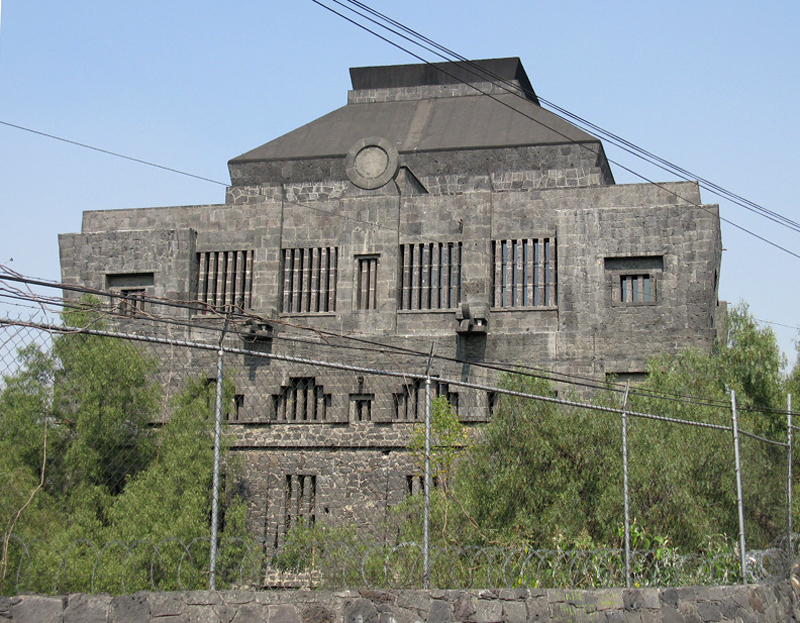Source: WTL photograph taken at Anahuacalli, the Diego Rivera Museum, in Mexico City.
Comments: Here is a somewhat better close-up of the building's same south façade. Now you can see motifs relating to corbel arches (although in this case they are not actual structural Mayan corbel arches) and two stylized Quetzalcóatl heads protruding from the middle of building. Furthermore, the building material is volcanic stone quarried from the eruption of the Xitle volcano, visible from the archeological site of Cuicuilco. The building has three floors, which in themselves have symbolic significance. Since the ground floor has no direct light from the outside, it symbolizes the pre-Hispanic underworld of Mictlán (the place of death), which is in Aztec mythology as place of transition to the world above, and where suffering souls can undergo change and ascent. A stairway ascends to the second floor, which symbolizes ascent to the light, to life on the earth. The top floor represents heaven, and from its terrace one has a panoramic vista of the Valley of Mexico. Furthermore, the ceilings and corners feature representations of pre-Hispanic gods including Xilonen (god of earth), Ehécatl (god of wind), Tláloc (god of water, rain, fertility), and Huehuetéotl (god of fire, depicted as an old man who carries a brazier on this back). And most significantly, Coatlicue, the quintessential binary Aztec goddess of life and death, is featured at the entrance.
Humanities question: Find the pages referring to Cuicuilco and the Xitle volcano in this textbook, then write a brief statement in which you speculate about the relationship between (a) Rivera's museum as architecture, (b) the notion of Mexican cultural origins (i.e., Cuicuilco, Teotihuacan, the Valley of Anáhuac itself, and the Aztecs in the place that became Mexico City--that is, the fact that this very museum is situated in Mexico City itself. In addition to meaning "house of the Valley of Anáhuac," Anahuacalli also can mean "house close to the water"; that is, on the edge of Lake Texcoco. A lot to ponder as Rivera designed this building.


